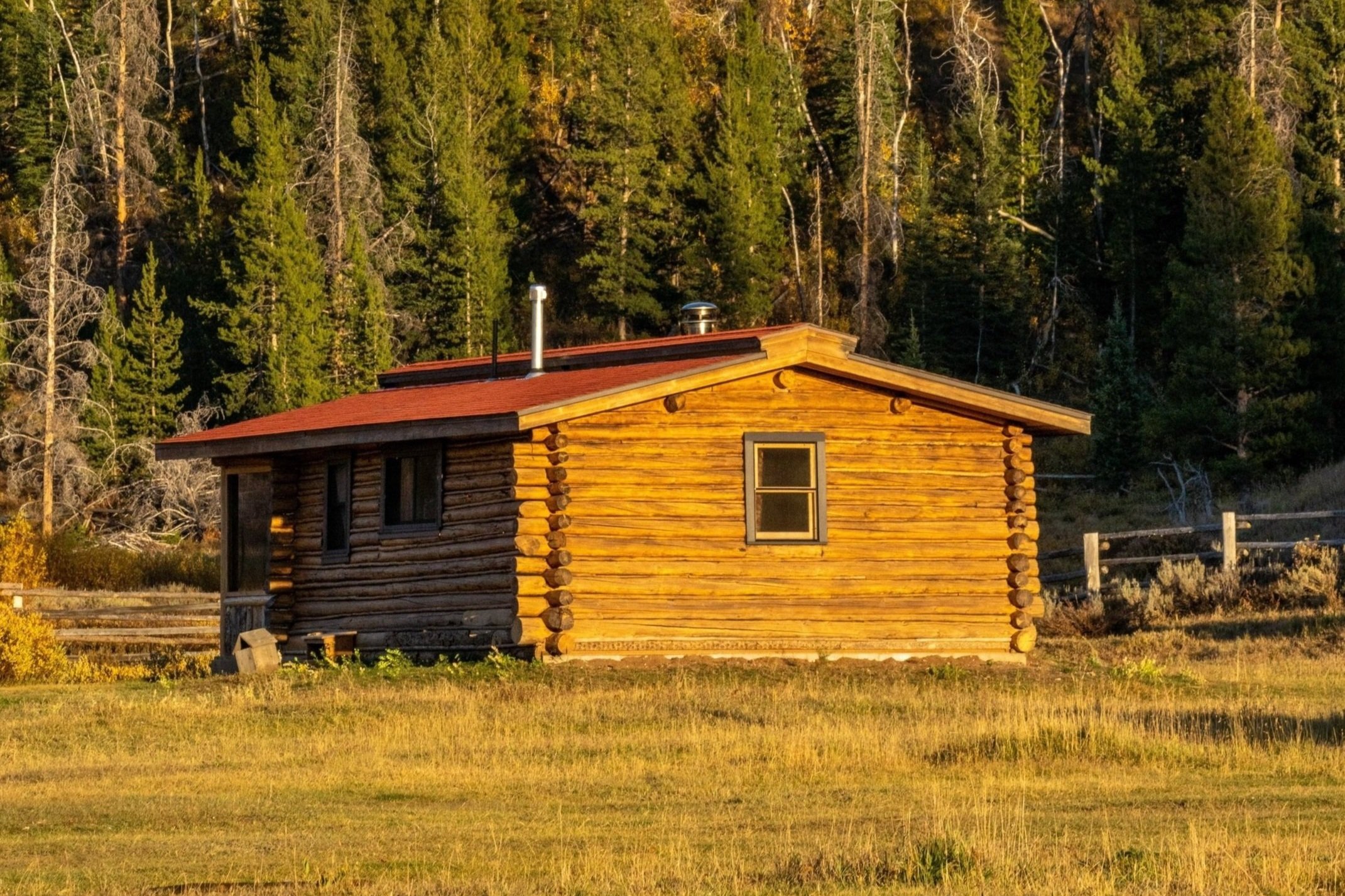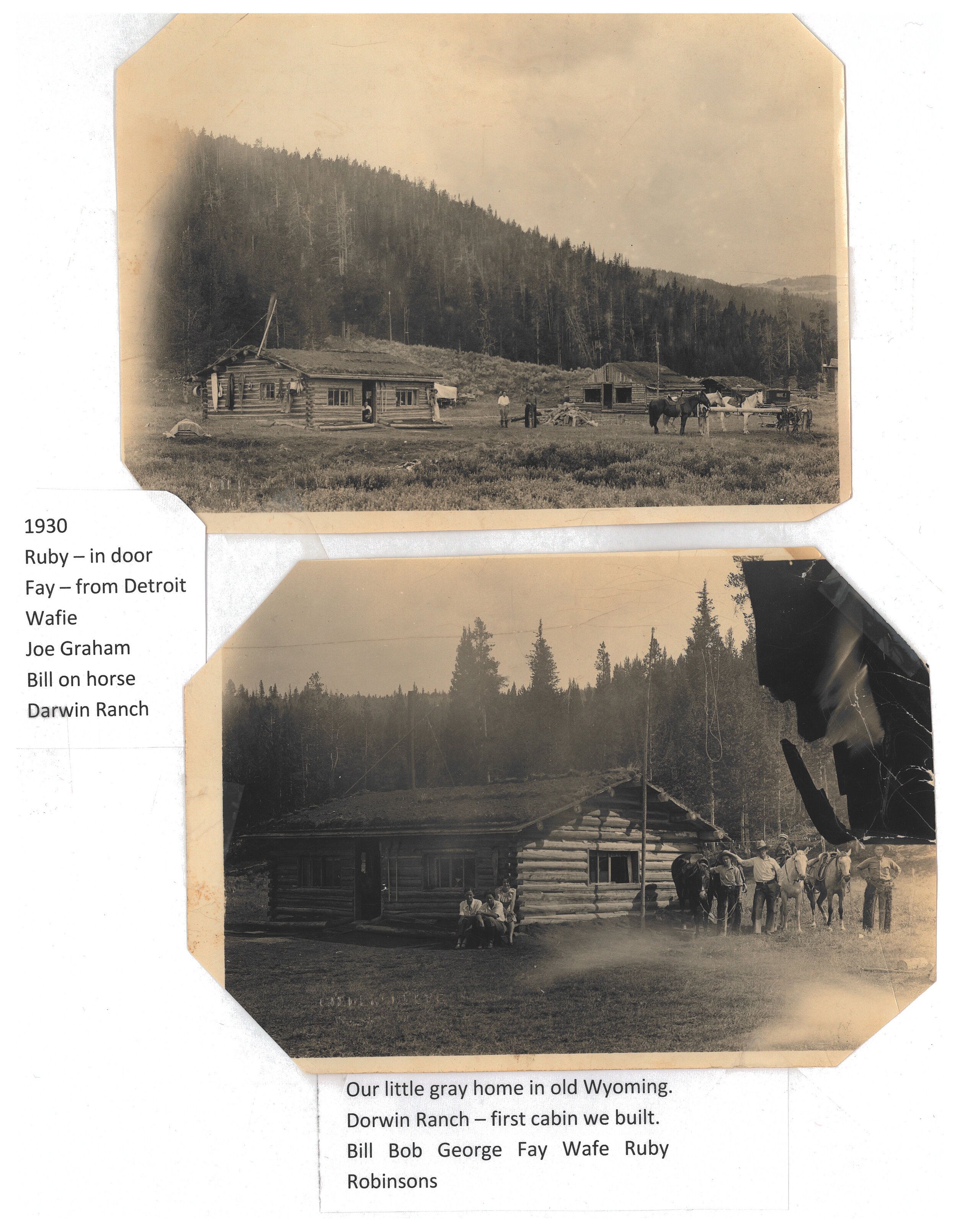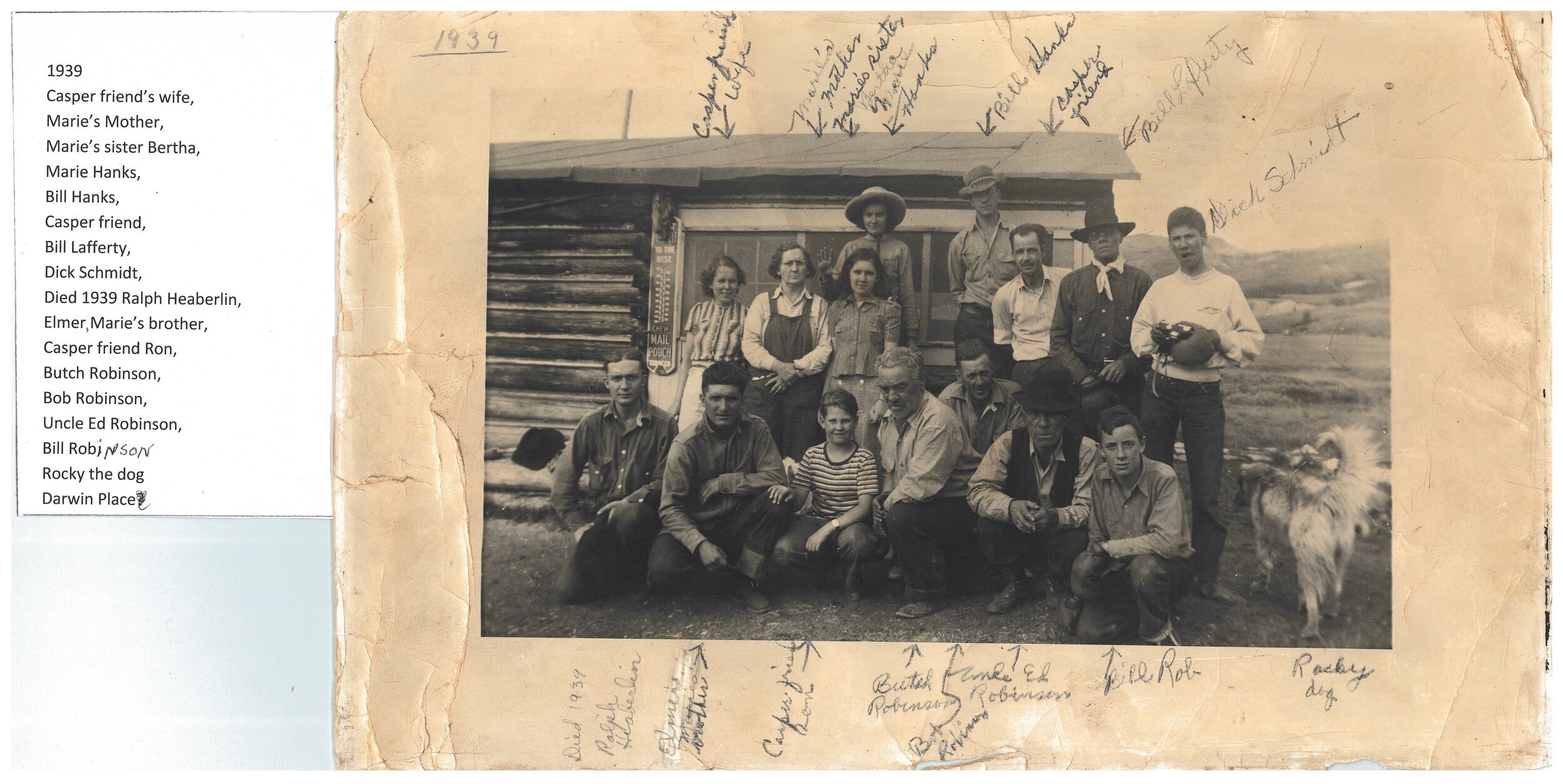A 120 YEAR-OLD HISTORY
The Darwin Ranch history is a story of family ownership—with hunting, trapping, and dude ranching paying the bills along the way. With the closest neighbor being 15 miles down a dirt road, The Darwin is surrounded by National Forest Land. “The scenery is gorgeous, and the roads are atrocious. There is no danger of an influx of travelers”. (Skylar Sandra Scott, History of Gros Ventre River Homesteads: From the Darwin Place to the Gros Ventre Ranch, Compiled by Jonita Sommers). In our eyes, the Darwin is the center of the west, located at the headwaters of three major rivers that drain in to the western part of the United States.
The Darwin Ranch is one of the few surviving homestead inholdings in a US Forest that has not been subdivided. It has a long history of homesteading, guest ranching, and supporting the western lifestyle that dates back to the turn of the century. It was first home to a fur trapper and trader by the name of Fred Dorwin. The ranch was later renamed Darwin on a misprinted document and the name stuck. The ranch was home to one of the first ‘dude’ operations in the west in the 20’s, hosting people from around the country from its very inception. Its characteristic architectural style is a nod to a very specific and unique time in homestead design. The “Architectural Craftsmen” style at that the Darwin was born out of guest ranches in the mountain west, exclusively built with timber logged from the nearby hillside.
In its list of owners are doctors, ranchers, lawmen, crooked trappers, soldiers, railroad men, ambassadors to Russia, and graduates of Harvard and Bowdoin college. Darwin was recently nominated to the National Register of Historic places for three specific and transformational reasons: it’s trapping history, outfitting and dude ranching history, and it’s Western Craftsman Architecture. This is an important recognition of Darwin’s rich contributions to the proud ranching and homesteading history of Northwest Wyoming. For more on our history, here is a link to the lengthy, in-depth history of the Darwin Place, as it is referred to by the old-timers, prepared by Ann Chamber Noble for the National Register.










